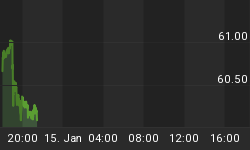As noted in Real Q1 GDP 0.2% vs. Consensus 1.0%; Disaster in the Details I got the first quarter GDP forecast details correct.
However, a bit of self-assessment with differing GDP deflators shows my prediction of close to zero growth could easily have looked rather silly.
I asked Doug Short at Advisor Perspectives what the GDP would have looked like using various deflators:
- GDP (Implicit GDP Deflator)
- PCE (Personal Consumption Expenditures)
- CPI (Consumer Price Index)
- Shadowstats (Williams' Alternate CPI)
Charts are shown below.
Both Doug and I consider Shadowstats absurd, but we include it because many follow the number. For a recent critique of the measure please see Deconstructing and Debunking Shadowstats.
GDP Implicit Deflator (Official GDP)

GDP with PCE as Deflator

GDP with CPI as Deflator

GDP with Shadowstats CPI as Deflator

Results
- GDP (Implicit GDP Deflator): 0.2%
- PCE (Personal Consumption Expenditures): 2.2%
- CPI (Consumer Price Index): 3.3%
- Shadowstats (Williams' Alternate CPI): -1.2%
Depending on your price deflator, GDP was between -1.2% and +3.3%. If you toss out Shadowstats, then the range is 0.2% to 3.3%.
That's still a damn wide range. People accuse the BEA all the time of manipulating the deflator to make things look good, but if they easily could have done that this month for far better results.
Over time, GDP is highest with the PCE and GDP implicit deflators. At least the BEA is consistent.
Mean GDP
- GDP (Implicit GDP Deflator): 3.26%
- PCE (Personal Consumption Expenditures): 3.32%
- CPI (Consumer Price Index): 2.93%
- Shadowstats (Williams' Alternate CPI): 0.79%
Next quarter, because of rising energy prices, deflating GDP by the CPI will likely yield worse results than the GDP deflator. Some people will criticize the BEA because of it, while remaining silent about this quarter.
As it stands, rising energy prices and the strong dollar will place downward pressure on second quarter GDP no matter which deflator one uses.
















